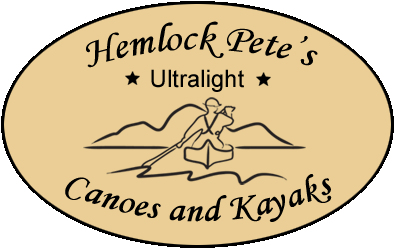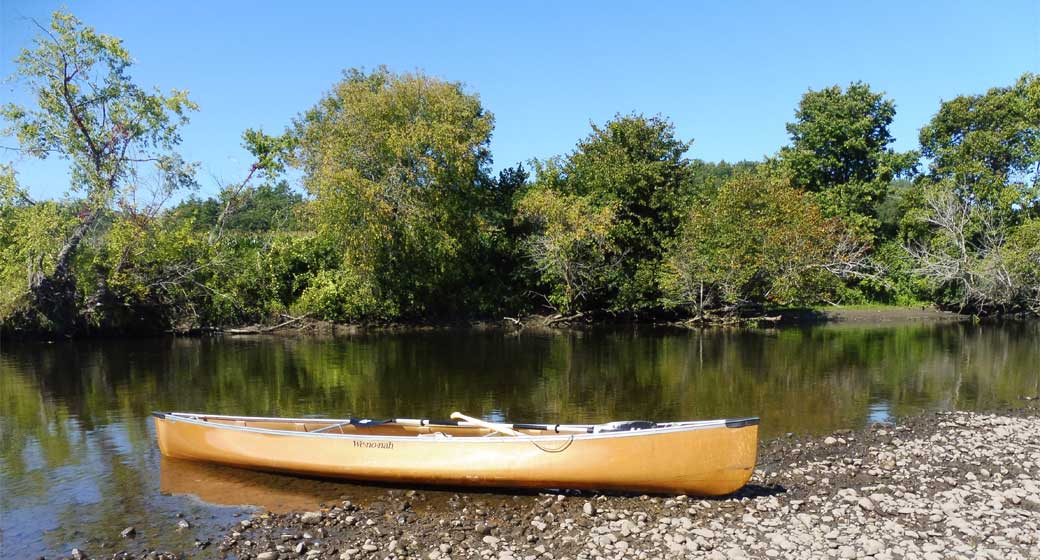



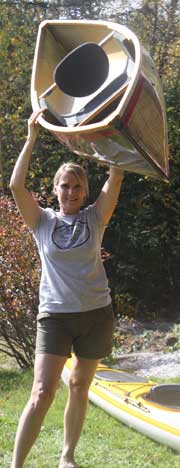
![]() Ultralight boats!
Ultralight boats!
Self Rescue
Unless you live in a vacuum it is hard not to notice the recent popularity in kayaking. While canoes are on the rebound, the major trend in most paddling shops is with touring kayaks. It is easy to see why. Low cost (for entry level boats), good exercise, easy to handle, easy to paddle, along with a sense of freedom, you do not need a partner. If you bring one along, you can still do your own thing.
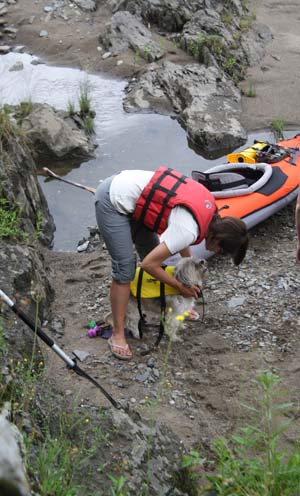
So you jump on the band wagon, buy a kayak, paddle, and PFD and head for the water. You paddle out from shore and are feeling quite confident. Then it happens, over you go. Now what do you do? Good question!!! Will you drown because you are stuck in the boat? Not likely. Unless you are overly obese and wedged into the cockpit like a pimento in an olive, you will fall out as the kayak tips over. There is nothing holding you in except the pressure you exert with your feet and knees on the foot and thigh braces (assuming your boat has them and you know how to use them in the first place). Here you are floating in the water (hopefully with your PFD on) next to your overturned kayak which is now completely filled with water. So what do you do? Well you have two options; start swimming and drag the kayak to shore or get back in it. Chances are most people will opt to swim to shore because they do not have the skill/knowledge of how to get back in, nor the equipment. No problem unless you are a fair distance from shore. Swimming, dragging a water filled 800lb kayak behind you is not easily done. If you have a paddling partner they can assist by towing or pushing the boat to shore like a tug boat. Again, this is not an easy task. We are assuming the weather is warm and the conditions are calm. If not, the difficulty factor increases dramatically.
Option two; get back in your boat. How do you do that? Good question!!! There are a number of ways to accomplish this. A solo technique using a paddle float is pretty slick. First you need to have a paddle float with you. This is a small float that attaches to the end of your paddle. After affixing the float to the paddle, the other end of the paddle is fastened to the rigging on the deck of the kayak extending out perpendicular to the boat itself. In essence, you now have a pontoon on one side of the craft. This stabilizes it on this side allowing you to climb back in from the paddle side or by sliding up the end of the boat. Once in the boat you will need to remove the water. This can be done by bailing or better yet, with a pump. If paddling with others they can stabilize your craft while you climb back in, again from the side or by shimmying up the end of the boat. All of these techniques should be practiced at least once a season so when the inevitable occurs you are prepared.
I come in contact with many, many, paddlers each year and it is actually a bit scary to see how unprepared some of them are. A good number of them have never considered the consequences of a capsize. The worst thing coming out of a capsize should be that you get wet. If you are not prepared (expecting that it will not happen to you) it may be a bit more unpleasant. If you are new to kayaking and/or have never dealt with these issues you should. Read a book, watch a video, or get a lesson, and then practice them once in a while. Chances are you will never need them however, if you do, you will be prepared. Once you have mastered these skills it is time to move onto the Eskimo roll. If you feel like a pimento, this may be your only option. Until next time, HAPPY PADDLING!!!
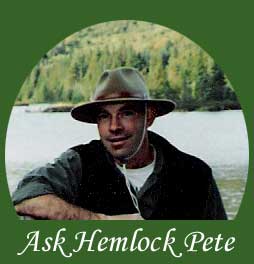
Have a question? I'm happy to answer it - just email me at hpcanoes@gmail.com
![]()
hpcanoes@gmail.com
603.667.5112

We specialize in ultralight solutions and offer expertise in canoes and Wee Lassie boats, as well as all the related equipment. Our favorites are Wenonah canoes and Wee Lassie boats. Although we will work with any material we like to get folks set up with lightweight canoes so you can dedicate your time to the joy of being out on the lakes and rivers instead of struggling to move your boat between car and water.
Scott Edwards, "Hemlock Pete" himself, offers you decades of paddling expertise. He is friendly, down-to-earth, and provides superior customer service. You won't find a better, or more pleasant, deal elsewhere.
